SUPER HERBS & PLANTS • SUPER SUPPLEMENTS
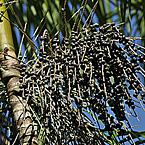
ACAI
There is no definitive scientific evidence based on studies in humans to support the use of acai berry for any health-related purpose. No independent studies have been published in peer-reviewed journals that substantiate claims that acai supplements alone promote rapid weight loss. Researchers who investigated the safety profile of an acai-fortified juice in animals observed that there were no body weight changes in rats given the juice compared with controls. Laboratory studies have focused on acai berry’s potential antioxidant properties (antioxidants are substances that are thought to protect cells from damaging effects of chemical reactions with oxygen). Laboratory studies also have shown that acai berries demonstrate anti-cancer and anti-inflammatory activity.
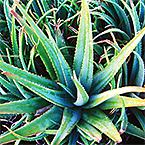
ALOE
Aloe latex contains strong laxative compounds. Products made with various components of aloe (aloin, aloe-emodin, and barbaloin) were at one time regulated by the FDA as oral over-the-counter (OTC) laxatives. In 2002, the FDA required that all OTC aloe laxative products be removed from the U.S. market or reformulated because the companies that manufactured them did not provide the necessary safety data.
Early studies show that topical aloe gel may help heal burns and abrasions. One study, however, showed that aloe gel inhibits healing of deep surgical wounds. Aloe gel has not been shown to prevent burns from radiation therapy.
There is not enough scientific evidence to support aloe vera for any of its other uses.
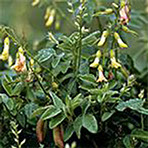
ASTRAGALUS
The evidence for using astragalus for any health condition is limited. High-quality clinical trials (studies in people) are generally lacking. There is some preliminary evidence to suggest that astragalus, either alone or in combination with other herbs, may have potential benefits for the immune system, heart, and liver, and as an adjunctive therapy for cancer.
NCCAM-funded investigators are studying the effects of astragalus on the body, particularly on the immune system.
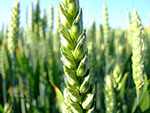
BARLEY GRASS
When we talk about "green foods," we're referring to a group of foods that includes young cereal grasses like barley grass and wheatgrass, as well a blue-green algae known as BGA. Nutritionally, they are close cousins to dark green leafy vegetables, but offer far greater levels of "nutrient density." In other words, an ounce of these concentrated green foods contains much more of the beneficial phytonutrients found in an ounce of green vegetables. The results of many experimental studies show that green foods have marked beneficial effects on cholesterol, blood pressure, immune response and cancer prevention. These effects are attributed in part to their high concentrations of chlorophyll.
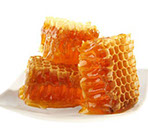
BEE PRODUCTS
Honey, pollen, and propolis Bee pollen is the most complete food found in nature containing vitamin B-9 and all 21 essential amino acids, making it a complete protein. Honey, in its organic/wild, raw, unfiltered states is rich in minerals, antioxidants, probiotics, enzymes, and one of the highest vibration foods on the planet. Bee pollen is actually the male seed of a flower blossom which are collected by the honey bees and mixed with the bees' digestive enzymes. Bee pollen is low in calories but rich in proteins, amino acids, vitamins, minerals, enzymes, beneficial fatty acids, carbohydrates, and bioflavonoids which are anti-viral, antibacterial and helpful in lowering cholesterol, stabilizing and strengthening capillaries. Royal jelly is the queen bee's extraordinary source of food. It is a blend of secretions from the salivary glands of the worker bee and contains a high concentration of vitamins B5, B6, and amino acids and is believed to be a potent antioxidant a special rejuvenating substance that promotes tissue growth, muscle and cell regeneration.
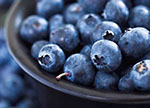
BLUEBERRIES
After many years of research on blueberry antioxidants and their potential benefits for the nervous system and for brain health, there is exciting new evidence that blueberries can improve memory. In a study involving older adults (with an average age of 76 years), 12 weeks of daily blueberry consumption was enough to improve scores on two different tests of cognitive function including memory. While participants in the study consumed blueberries in the form of juice, three-quarters of a pound of blueberries were used to make each cup of juice. As participants consumed between 2 to 2-1/2 cups each day, the participants actually received a very plentiful amount of berries. The authors of this study were encouraged by the results and suggested that blueberries might turn out to be beneficial not only for improvement of memory, but for slowing down or postponing the onset of other cognitive problems frequently associated with aging.
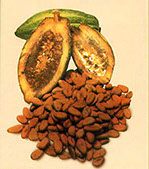
CACAO
Raw Chocolate) -- The seed of a fruit of an Amazonian tree, cacao is the highest antioxidant food on the planet, the #1 source of magnesium, iron, chromium and is also extremely high in PEA, theobromine (cardiovascular support), and anandamide ("bliss chemical"). Raw Chocolate balances brain chemistry, builds strong bones, is a natural aphrodisiac, elevates your mood and energy. Most commercial chocolates are highly processed. Although it was once believed that dark chocolate contained the highest levels flavanols, recent research indicates that, depending on how the dark chocolate was processed, this may not be true. The good news is that most major chocolate manufacturers are looking for ways to keep the flavanols in their processed chocolates. But for now, your best choices are likely dark chocolate over milk chocolate (especially milk chocolate that is loaded with other fats and sugars) and cocoa powder that has not undergone Dutch processing (cocoa that is treated with an alkali to neutralize its natural acidity).
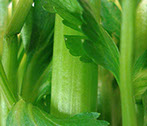
CELERY
Celery is a strongly alkaline food that helps to counteract acidosis, purify the bloodstream, aid in digestion, prevent migraines, relax the nerves, reduce blood pressure, and clear up skin problems. Celery contains compounds called coumarins which are known to enhance the activity of certain white blood cells and support the vascular system. Celery’s rich organic sodium content has the ability to dislodge calcium deposits from the joints and holds them in solution until they can be eliminated safely from the kidneys. Celery is a well known natural diuretic and has ample ability to flush toxins out of the body. Celery also has significant anti-inflammatory properties making it an essential food for those who suffer from auto-immune illnesses. It also contains significant amounts of calcium and silicon which can aid in the repair of damaged ligaments and bones. Celery is rich in vitamin A, magnesium, and iron which all help to nourish the blood and aid those suffering from rheumatism, high blood pressure, arthritis, and anemia. Fresh celery juice is one of the most powerful and healing juices one can drink. Just 16 oz of fresh celery juice a day can transform your health and digestion in as little as one week.
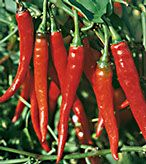
CAYENNE
The purported therapeutic benefits are almost too unbelievable, but its reputation keeps growing among medical researchers as well as alternative health aficionados and deservedly so. It can do everything from kill cancer cells in the prostate, lungs, and pancreas to immediately stop a heart attack within 30 seconds. Capsicum is also great for the stomach and the intestinal tract. It stimulates the peristaltic motion of the intestines and aids in assimilation and elimination. When taken internally, it warms the body and has even been used by some herbalist doctors to help heal and rebuild flesh due to frostbite. Notwithstanding its hot taste, paradoxically it is actually superb for rebuilding the tissue in the stomach, facilitating healing with stomach and intestinal ulcers.
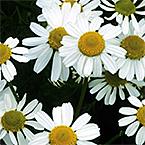
CHAMOMILE
Chamomile has not been well studied in people so there is little evidence to support its use for any condition.
Some early studies point to chamomile’s possible benefits for certain skin conditions and for mouth ulcers caused by chemotherapy or radiation. In combination with other herbs, chamomile may be of some benefit for upset stomach, for diarrhea in children, and for infants with colic.
NCCAM-funded research includes studies of chamomile for generalized anxiety disorder and abdominal pain caused by children’s bowel disorders.
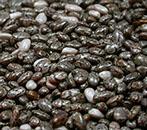
CHIA SEED
When you hear “chia,” you may think of “Chia Pets.” These are clay figures sold in the US that support the growth of chia sprouts. But chia has a much longer history as a medicinal herb. It originated in Mexico and was cultivated by the Aztecs. Today, chia is grown commercially in Central America and South America. It is grown mainly for its seed, which is a rich source of omega-3 fatty acids. People use chia seed for diabetes, high blood pressure, and for generally reducing the risk of heart disease and stroke (cardiovascular disease)

CINNAMON
High-quality clinical studies in people to support the use of cinnamon for any medical condition is generally lacking.
An analysis of five clinical trials concluded that cinnamon does not appear to affect factors related to diabetes and heart disease Cinnamon appears to be safe for most people when taken by mouth in amounts up to 6 grams daily for 6 weeks or less. Some people may have allergic reactions to cinnamon or its parts.
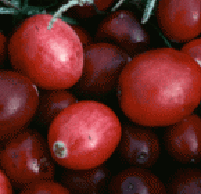
CRANBERRY
There is some evidence that cranberry can help to prevent urinary tract infections; however, the evidence is not definitive, and more research is needed. Cranberry has not been shown to be effective as a treatment for an existing urinary tract infection.
Research shows that components found in cranberry may prevent bacteria, such as E. coli, from clinging to the cells along the walls of the urinary tract and causing infection. There is also preliminary evidence that cranberry may reduce the ability of H. pylori bacteria to live in the stomach and cause ulcers. Findings from a few laboratory studies suggest that cranberry may have antioxidant properties and may also be able to reduce dental plaque (a cause of gum disease).
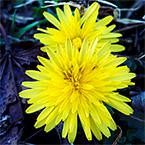
DANDELION
Dandelion greens are edible and are a rich source of vitamin A. Dandelion has been used in many traditional medical systems, including Native American and traditional Arabic medicine. Historically, dandelion was most commonly used to treat liver diseases, kidney diseases, and spleen problems. Less commonly, dandelion was used to treat digestive problems and skin conditions. Today, traditional or folk uses of dandelion include use as a liver or kidney “tonic,” as a diuretic, and for minor digestive problems. The leaves and roots of the dandelion, or the whole plant, are used fresh or dried in teas, capsules, or extracts. Dandelion leaves are used in salads or as a cooked green, and the flowers are used to make wine. There is no compelling scientific evidence for using dandelion as a treatment for any medical condition. Dandelion use is generally considered safe. However, there have been rare reports of upset stomach and diarrhea, and some people are allergic to the plant. People with an inflamed or infected gallbladder, or blocked bile ducts, should avoid using dandelion..
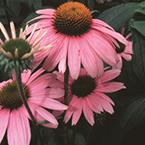
ECHINACEA
Study results are mixed on whether echinacea can prevent or effectively treat upper respiratory tract infections such as the common cold. For example, two NCCAM-funded studies did not find a benefit from echinacea, either as Echinacea purpurea fresh-pressed juice for treating colds in children, or as an unrefined mixture of Echinacea angustifolia root and Echinacea purpurea root and herb in adults. However, other studies have shown that echinacea may be beneficial in treating upper respiratory infections. NCCAM is continuing to support the study of echinacea for the treatment of upper respiratory infections. NCCAM is also studying echinacea for its potential effects on the immune system. When taken by mouth, echinacea usually does not cause side effects. However, some people experience allergic reactions, including rashes, increased asthma, and anaphylaxis (a life-threatening allergic reaction). In clinical trials, gastrointestinal side effects were most common.

EPHEDRA
An NCCAM-funded study that analyzed phone calls to poison control centers found a higher rate of side effects from ephedra, compared with other herbal products. Other studies and systematic reviews have found an increased risk of heart, psychiatric, and gastrointestinal problems, as well as high blood pressure and stroke, with ephedra use. According to the U.S. Food and Drug Administration (FDA), there is little evidence of ephedra’s effectiveness, except for short-term weight loss. However, the increased risk of heart problems and stroke outweighs any benefits.
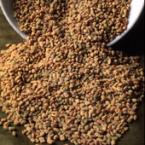
FENUGREEK
Fenugreek seed is commonly used in cooking. Historically, fenugreek was used for a variety of health conditions, including menopausal symptoms and digestive problems. It was also used for inducing childbirth. Today, fenugreek is used as a folk or traditional remedy for diabetes and loss of appetite, and to stimulate milk production in breastfeeding women. It is also applied to the skin for inflammation. The dried seeds are ground and taken by mouth or used to form a paste that is applied to the skin. A few small studies have found that fenugreek may help lower blood sugar levels in people with diabetes.
There is not enough scientific evidence to support the use of fenugreek for any other health condition..

FEVERFEW
Some research suggests that feverfew may be helpful in preventing migraine headaches; however, results have been mixed and more evidence is needed from well-designed studies. One study found that feverfew did not reduce rheumatoid arthritis symptoms in women whose symptoms did not respond to conventional medicines. It has been suggested that feverfew could help those with milder symptoms. There is not enough evidence available to assess whether feverfew is beneficial for other uses.
NCCAM-funded researchers have studied ways to standardize feverfew; that is, to prepare it in a consistent manner. Standardized preparations can be used in future studies of feverfew. No serious side effects have been reported for feverfew. Side effects can include canker sores, swelling and irritation of the lips and tongue, and loss of taste
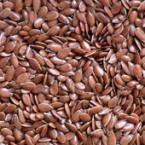
FLAX SEED
Flaxseed contains soluble fiber, like that found in oat bran, and may have a laxative effect. Studies of flaxseed preparations to lower cholesterol levels report mixed results. A 2009 review of the clinical research found that cholesterol-lowering effects were more apparent in post-menopausal women and in people with high initial cholesterol concentrations. Some studies suggest that alpha-linolenic acid (a substance found in flaxseed and flaxseed oil) may benefit people with heart disease. But not enough reliable data are available to determine whether flaxseed is effective for heart conditions. Study results are mixed on whether flaxseed decreases hot flashes. Although some population studies suggest that flaxseed might reduce the risk of certain cancers, there is not enough research to support a recommendation for this use. Recent studies are looking at its potential role in preventing or treating atherosclerosis (hardening of the arteries), breast cancer, and ovarian cysts
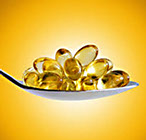
FISH OILS
Fish oil is used for a wide range of conditions. It is most often used for conditions related to the heart and blood system. Some people use fish oil to lower blood pressure or triglyceride levels (fats related to cholesterol). Fish oil has also been tried for preventing heart disease or stroke. The scientific evidence suggests that fish oil really does lower high triglycerides, and it also seems to help prevent heart disease and stroke when taken in the recommended amounts. Ironically, taking too much fish oil can actually increase the risk of stroke. Fish may have earned its reputation as “brain food” because some people eat fish to help with depression, psychosis, attention deficit-hyperactivity disorder (ADHD), Alzheimer’s disease, and other thinking disorders.
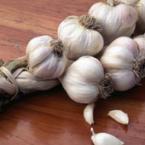
GARLIC
Some evidence indicates that taking garlic can slightly lower blood cholesterol levels; studies have shown positive effects for short-term (1 to 3 months) use. However, an NCCAM-funded study on the safety and effectiveness of three garlic preparations (fresh garlic, dried powdered garlic tablets, and aged garlic extract tablets) for lowering blood cholesterol levels found no effect.
Preliminary research suggests that taking garlic may slow the development of atherosclerosis (hardening of the arteries), a condition that can lead to heart disease or stroke. Evidence suggests that taking garlic may slightly lower blood pressure, particularly in people with high blood pressure. Some studies suggest consuming garlic as a regular part of the diet may lower the risk of certain cancers. However, no clinical trials have examined this. A clinical trial on the long-term use of garlic supplements to prevent stomach cancer found no effect.

GINGER
Ginger has been used as a natural remedy for many ailments for centuries. Ginger may be powerful weapon in the treatment of ovarian cancer. A study conducted at the University of Michigan Comprehensive Cancer Center found that ginger powder induces cell death in all ovarian cancer cells to which it was applied. A study at the University of Minnesota found that ginger may slow the growth of colorectal cancer cells. A review of several studies has concluded that ginger is just as effective as vitamin B6 in the treatment of morning sickness. Ginger has been shown to be an effective remedy for the nausea associated with motion sickness. One study showed that ginger has anti-inflammatory properties and is a powerful natural painkiller. Ginger has long been used as a natural heartburn remedy. It is most often taken in the form of tea for this purpose.
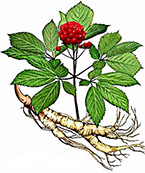
GINSENG
Some studies have shown that Asian ginseng may lower blood glucose. Other studies indicate possible beneficial effects on immune function. Although Asian ginseng has been widely studied for a variety of uses, research results to date do not conclusively support health claims associated with the herb. Only a few large, high-quality clinical trials have been conducted. Most evidence is preliminary—i.e., based on laboratory research or small clinical trials.
NCCAM supports studies to better understand the use of Asian ginseng. Areas of recent NCCAM-funded research include the herb’s potential role in treating insulin resistance, cancer, and Alzheimer’s disease.
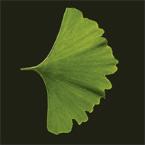
GINKO
An NCCAM-funded study of the well-characterized ginkgo product EGb–761 found it ineffective in lowering the overall incidence of dementia and Alzheimer's disease in the elderly. Further analysis of the same data also found ginkgo to be ineffective in slowing cognitive decline, lowering blood pressure, or reducing the incidence of hypertension. In this clinical trial, known as the Ginkgo Evaluation of Memory study, researchers recruited more than 3,000 volunteers age 75 and over who took 240 mg of ginkgo daily. Participants were followed for an average of approximately 6 years. Some smaller studies of ginkgo for memory enhancement have had promising results, but a trial sponsored by the National Institute on Aging of more than 200 healthy adults over age 60 found that ginkgo taken for 6 weeks did not improve memory. Overall, the evidence on ginkgo for symptoms of intermittent claudication has not yet shown a significant benefit for this condition, although several small studies have found modest improvements. There is conflicting evidence on the efficacy of ginkgo for tinnitus.
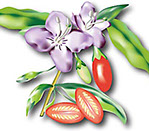
GOJI BERRIES (WOLFBERRIES)
Used in traditional Chinese medicine for over 5,000 years, goji berries are regarded as a longevity, strength-building, and potency food of the highest order. This superfood contains 18 kinds of amino acids, all 8 essential amino acids, up to 21 trace minerals, high amounts of antioxidants, iron, polysaccharides, B & E vitamins, and many other nutrients. Highest Vitamin C source on planet. Great for rebuilding tissue, purifying blood, and enhancing immunity, and energy.
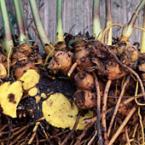
GOLDENSEAL
Few studies have been published on goldenseal’s safety and effectiveness, and there is little scientific evidence to support using it for any health problem.
Clinical studies on a compound found in goldenseal, berberine, suggest that the compound may be beneficial for certain infections—such as those that cause some types of diarrhea, as well as some eye infections. However, goldenseal preparations contain only a small amount of berberine, so it is difficult to extend the evidence about the effectiveness of berberine to goldenseal.. Goldenseal may cause changes in the way the body processes drugs, and could potentially alter the effects of many drugs.
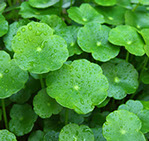
GOTU KOLA
Gotu kola is an herb that is commonly used in Traditional Chinese medicine. The above-ground parts are used to make medicine. Gotu kola is used to treat bacterial, viral, or parasitic infections such as urinary tract infection (UTI), shingles, leprosy, cholera, dysentery, syphilis, the common cold, influenza, H1N1 (swine) flu, elephantiasis, tuberculosis, and schistosomiasis. Gotu kola is also used for fatigue, anxiety, depression, psychiatric disorders, Alzheimer's disease, and improving memory and intelligence. Other uses include wound healing, trauma, and circulation problems (venous insufficiency) including varicose veins, and blood clots in the legs. Some people use gotu kola for sunstroke, tonsillitis, fluid around the lungs (pleurisy), liver disease (hepatitis), jaundice, systemic lupus erythematosus (SLE), stomach pain, diarrhea, indigestion, stomach ulcers, epilepsy, asthma, “tired blood” (anemia), diabetes, and for helping them live longer.
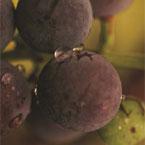
GRAPE SEED EXTRACT
Studies have found that some compounds in grape seed extract may be effective in relieving symptoms of chronic venous insufficiency (when veins have problems sending blood from the legs back to the heart) and reducing edema (swelling) after an injury or surgery. Small randomized trials have found beneficial effects of grape seed extract for diabetic retinopathy (an eye problem caused by diabetes) and for vascular fragility (weakness in small blood vessels). Larger trials are needed to confirm these findings. Grape seed extract contains antioxidants, which help prevent cell damage caused by free radicals (highly reactive molecules that can damage cell function). Preliminary studies have shown some beneficial antioxidant effects; however, more research is needed. A study funded by the National Cancer Institute (NCI) found that grape seed extract did not reduce the hardening of breast tissue that can occur after radiation therapy for breast cancer.
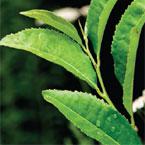
GREEN TEA
Laboratory studies suggest that green tea may help protect against or slow the growth of certain cancers, but studies in people have shown mixed results.
Some evidence suggests that the use of green tea preparations improves mental alertness, most likely because of its caffeine content. There are not enough reliable data to determine whether green tea can aid in weight loss, lower blood cholesterol levels, or protect the skin from sun damage. NCCAM supports studies to learn more about the components in green tea and their effects on conditions such as cancer, diabetes, and heart disease. Green tea is safe for most adults when used in moderate amounts.

GUARANA
Guarana is primarily used to boost energy. It has two times more caffeine than coffee beans, with its content rate at 2-5%. Guarana can be found in many commercialized products including soft drinks, energy shots and capsules. It can also be found in herbal tea. Guarana's popularity began in Brazil, where it can be found in the soft drink, Guarana Antarctica. Only Coca Cola sells more than Guarana Antarctica in Brazil. Many people outside of South America may not realize it, but Brazil is one of the largest consuming soft drink countries in the world. That, combined with Guarana originating there, has led to the large consumption of this popular stimulant. Guarana is one of the most popular forms of caffeine intake throughout South America.. It has been shown several times - through clinical studies - that Guarana can improve memory and alertness. In many cases it can also improve a person's mood. One of the more popular clinical studies done on Guarana showed strong positive effects after a dosage of just 75 mg. The biggest advantage - and one that most people aren't aware of - is that it can help you lose weight. In a 45-week study, people who consumed 75 mg of Guarana per day lost an average of 11 lbs. This is thought o be because it can make you feel full therefore reducing your appetite.
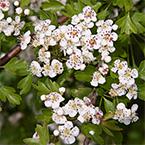
HAWTHORN
There is scientific evidence that hawthorn leaf and flower may be safe and effective for milder forms of heart failure, but study results are conflicting. There is not enough scientific evidence to determine whether hawthorn works for other heart problems.
NCCAM-supported research to date includes a study of the mechanism by which hawthorn may affect heart failure.
Hawthorn is considered safe for most adults when used for short periods of time. Side effects are rare and can include upset stomach, headache, and dizziness. Although drug interactions with hawthorn have not been thoroughly studied, there is evidence to suggest that hawthorn may interact with a number of different drugs, including certain heart medications.
HEMP
Hemp Products eaten their RAW form -- Packed with 33 % pure digestible protein, rich in iron, amino acids, and vitamin E as well as omega-3's and GLA. A perfect food..
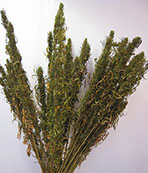
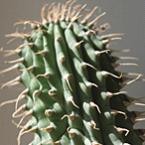
HOODIA
There is no reliable scientific evidence to support hoodia’s use. No studies of the herb in people have been published. Hoodia’s safety is unknown. Its potential risks, side effects, and interactions with medicines and other supplements have not been studied. The quality of hoodia products varies widely. News reports suggest that some products sold as hoodia do not contain any hoodia.
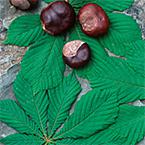
HORSE CHESTNUT
Studies have found that horse chestnut seed extract is beneficial in treating chronic venous insufficiency. There is also preliminary evidence that horse chestnut seed extract may be as effective as wearing compression stockings. There is not enough scientific evidence to support the use of horse chestnut seed, leaf, or bark for any other conditions. Do not use raw or unprocessed horse chestnut seeds, leaves, bark, or flowers. They contain esculin, which is poisonous.
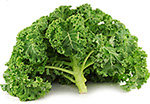
KALE
Kale, also known as borecole, is one of the healthiest vegetables on the planet. A leafy green, kale is available in curly, ornamental, or dinosaur varieties. It belongs to the Brassica family that includes cruciferous vegetables such as cabbage, collards, broccoli, and Brussels sprouts. What makes kale so exceptional? Here is why it's a superstar vegetable -- and ways to work it into your diet. Kale is a Nutritional Powerhouse. One cup of chopped kale contains 33 calories and 9% of the daily value of calcium, 206% of vitamin A, 134% of vitamin C, and a whopping 684% of vitamin K. It is also a good source of minerals copper, potassium, iron, manganese, and phosphorus. Kale’s health benefits are primarily linked to the high concentration and excellent source of antioxidant vitamins A, C, and K -- and sulphur-containing phytonutrients. Carotenoids and flavonoids are the specific types of antioxidants associated with many of the anti-cancer health benefits. Kale is also rich in the eye-health promoting lutein and zeaxanthin compounds. Beyond antioxidants, the fiber content of cruciferous kale binds bile acids and helps lower blood cholesterol levels and reduce the risk of heart disease, especially when kale is cooked instead of raw.
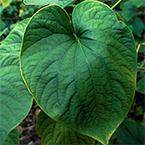
KAVA
Although scientific studies provide some evidence that kava may be beneficial for the management of anxiety, the U.S. Food and Drug Administration (FDA) has issued a warning that using kava supplements has been linked to a risk of severe liver damage. Kava is not a proven therapy for other uses. Studies on kava were suspended after the FDA issued its warning. Kava has been reported to cause liver damage, including hepatitis and liver failure (which can cause death). Kava has been associated with several cases of dystonia (abnormal muscle spasm or involuntary muscle movements). Kava may interact with several drugs, including drugs used for Parkinson’s disease. Long-term and/or heavy use may result in scaly, yellowed skin.
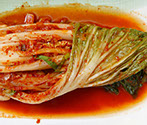
KIM CHI
Koreans eat so much of this super-spicy condiment (40 pounds of it per person each year) that natives say “kimchi” instead of “cheese” when getting their pictures taken. The reddish fermented cabbage (and sometimes radish) dish—made with a mix of garlic, salt, vinegar, chile peppers, and other spices—is served at every meal, either alone or mixed with rice or noodles. And its part of a high-fiber, low-fat diet that has kept obesity at bay in Korea. Kimchi also is used in everything from soups to pancakes, and as a topping on pizza and burgers. Why to try it: Kimchi (or kimchee) is loaded with vitamins A, B, and C, but its biggest benefit may be in its “healthy bacteria” called lactobacilli, found in fermented foods like kimchi and yogurt. This good bacteria helps with digestion, plus it seems to help stop and even prevent yeast infections, according to a recent study. And more good news: Some studies show fermented cabbage has compounds that may prevent the growth of cancer
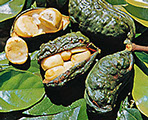
KOLA NUT
The kola nut is a caffeine-rich nut that is native to tropical Africa. Among some Nigerian tribes, the kola tree is thought to be the first tree on earth, and the nut is considered a symbol of hospitality and kindness. Though nearly tasteless on its own, kola nuts are often chewed before meals to help promote digestion and to help counteract possible ill effects from tainted drinking water. Kola nut is a stimulant in its own right, containing 1.5% - 2% caffeine, plus theobromine, which increases cerebral circulation. In fact, the caffeine-containing fruit of the tree is sometimes used as a flavoring ingredient in beverages, and is the origin of the term "cola." In addition, kola nut can help increase oxygen levels in the blood and promote better concentration and a “clearing” of the head. Kola nut also serves to "drive" other herbs into the blood.
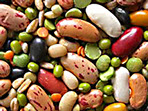
LEGUMES
As an excellent source of complex carbohydrates, protein and fiber, legumes are a highly satiating food. This means that for a relatively low amount of calories legumes make you feel fuller longer and, therefore, help prevent the hunger that can lead to unhealthy snacking and unwanted pounds. For about 115 calories, a 1/2-cup serving of cooked lentils provides about 9 grams of protein, 20 grams of mostly complex carbohydrates and less than half a gram of fat. It also supplies nearly 8 grams of fiber, or 31 percent of the recommended daily value. Most legumes contain significant amounts of insoluble and soluble fiber. Eating legumes several times a week promotes bowel regularity and helps keep blood sugar levels in check.
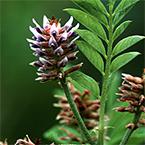
LICORICE
An injectable form of licorice extract—not available in the United States—has been shown to have beneficial effects against hepatitis C in clinical trials. There are no reliable data on oral forms of licorice for hepatitis C. More research is needed before reaching any conclusions. There are not enough reliable data to determine whether licorice is effective for any condition. In large amounts, licorice containing glycyrrhizin can cause high blood pressure, salt and water retention, and low potassium levels, which could lead to heart problems. DGL products are thought to cause fewer side effects. The safety of using licorice as a dietary supplement for more than 4 to 6 weeks has not been thoroughly studied.
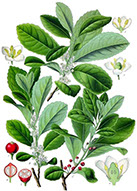
MATÉ
he Pasteur Institute and the Paris Scientific society in 1964 were interested in this healthy source of vitamins and did a thorough study of its properties. The investigators concluded "it is difficult to find a plant in any area of the world equal to mate in nutritional value" and that yerba mate contains "practically all of the vitamins necessary to sustain life." In addition, results from a study done by researchers at the University of Madrid assert a high content of mineral elements, especially K, Mg, and Mn, in mate. They considered those findings “to be of great relevance” to the nutritional value of mate infusions. Yerba mate has been used as a base for herbal medicines in South America for centuries, and the plant’s benefits and therapeutic properties have recently been verified by a number of scientific studies. The chemical components of yerba mate are similar to those found in green tea; however, yerba mate is more nutritious than green tea. Of the six commonly used stimulants in the world: yerba mate, coffee, tea, kola nut, cocoa and guarana, yerba mate triumphs as the most balanced, delivering both energy and nutrition.
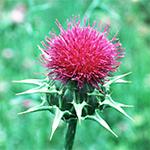
MILK THISTLE
Previous laboratory studies suggested that milk thistle may benefit the liver by protecting and promoting the growth of liver cells, fighting oxidation (a chemical process that can damage cells), and inhibiting inflammation. However, results from small clinical trials of milk thistle for liver diseases have been mixed, and two rigorously designed studies found no benefit. A 2012 clinical trial, cofunded by NCCAM and the National Institute of Diabetes and Digestive and Kidney Diseases, showed that two higher-than-usual doses of silymarin were no better than placebo for chronic hepatitis C in people who had not responded to standard antiviral treatment. The 2008 Hepatitis C Antiviral Long-Term Treatment Against Cirrhosis (HALT-C) study, sponsored by the National Institutes of Health (NIH), found that hepatitis C patients who used silymarin had fewer and milder symptoms of liver disease and somewhat better quality of life but no change in virus activity or liver inflammation.
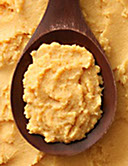
MISO
High in protein and rich in vitamins and minerals, miso played an important nutritional role in feudal Japan. Miso is still widely used in Japan, both in traditional and modern cooking, and has been gaining worldwide interest. Miso is typically salty, but its flavor and aroma depend on various factors in the ingredients and fermentation process. Different varieties of miso have been described as salty, sweet, earthy, fruity, and savory. The traditional Chinese analogue of miso is known as dòujiàng
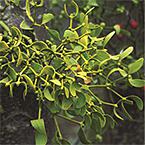
MISTLETOE
Laboratory studies have found that mistletoe kills cancer cells and stimulates the immune system.
The use of mistletoe to treat cancer has been studied in Europe in more than 30 clinical trials. Although improvements in survival or quality of life have been reported, almost all of the trials had major weaknesses in their design that raise doubts about the findings. Raw, unprocessed mistletoe is poisonous. Eating raw, unprocessed European mistletoe or American mistletoe can cause vomiting, seizures, a slowing of the heart rate, and even death. American mistletoe is unsafe for medicinal use. In countries where commercial mistletoe is available by injection, such as Germany, those extracts are considered to be generally safe when used according to product directions and under the supervision of a health care provider.
Injected mistletoe extract may cause itching or redness in the area of the injection..
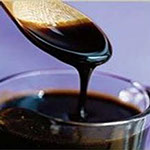
MOLASSES
Fortunately, the nutritional value of molasses is becoming better-known, and various grades of molasses are now being sold to us as baking ingredients, sugar substitutes and mineral supplements. This is especially true of blackstrap molasses, the highest and most nutritious grade of molasses. Below is a list of blackstrap's health benefits and advice on how to consume it as a health supplement. One serving (two tablespoons) of blackstrap contains approximately 14 percent of our RDI of copper, an important trace mineral whose peptides help rebuild the skin structure that supports healthy hair. Consequently, long-term consumption of blackstrap has been linked to improved hair quality, hair regrowth in men and even a restoration of your hair's original color! Click here for more information about blackstrap's hair benefits. Unlike refined sugar, blackstrap molasses has a moderate glycemic load of 55. This makes it a good sugar substitute for diabetics and individuals who are seeking to avoid blood sugar spikes. Moreover, one serving of blackstrap contains no fat and only 32 calories, making it suitable for a weight loss diet. Blackstrap is a natural stool softener that can improve the regularity and quality of your bowel movements. Two tablespoons of blackstrap contain 13.2 percent of our RDI of iron, which our bodies need to carry oxygen to our blood cells.

MUSHROOMS
Medicinal Mushrooms (Reishi, cordyceps, maitake, shiitake, lion's mane, etc.) -- High in polysaccharides and super immune enhancing components, medicinal mushrooms are one of the most intelligent adaptogenic herb/superfoods on the planet! They have also been proven effective in healing cancer and a variety of other ailments.
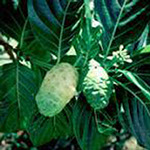
NONI
In laboratory research, noni has shown antioxidant, immune-stimulating, and tumor-fighting properties. These results suggest that noni may warrant further study for conditions such as cancer and cardiovascular disease. However, noni has not been well studied in people for any health condition. NCCAM-funded research includes a study on noni for cancer to determine its safety and potential effects on tumors and symptoms, as well as a laboratory study of noni’s effects on prostate cancer cells. The National Cancer Institute is funding preliminary research on noni for breast cancer prevention and treatment. Noni is high in potassium. People who are on potassium-restricted diets should avoid using noni. Several noni juice manufacturers have received warnings from the U.S. Food and Drug Administration about making unsupported health claims.
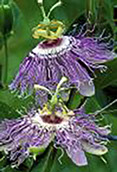
PASSIONFLOWER
Passionflower’s effect on anxiety has not been studied extensively. A 2009 systematic review of two studies that included 198 people compared the ability of passionflower and two drugs to reduce anxiety. It concluded that the three substances had about the same degree of minimal effectiveness. There is not enough evidence to draw conclusions about passionflower for cardiovascular conditions, asthma, hemorrhoids, burns, or sleep. Passionflower is generally considered to be safe but may cause dizziness and confusion. Taking passionflower with a sedative may increase the risk of excessive sleepiness. Passionflower should not be used during pregnancy as it may induce contractions.
PEPPERMINT
Results from several studies suggest that peppermint oil may improve symptoms of irritable bowel syndrome.
A few studies have found that peppermint oil, in combination with caraway oil, may help relieve indigestion, but this evidence is preliminary. Although there are some promising results, there is no clear-cut evidence to support the use of peppermint oil for other health conditions. Peppermint oil appears to be safe for most adults when used in small doses. Possible side effects include allergic reactions and heartburn.
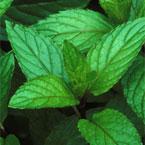
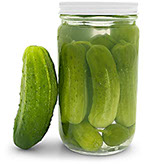
PICKLE
Dill pickles are cucumbers that have been fermented in a brine made up of water, vinegar, salt and dill. While the cucumbers and the dill used to make pickles contain essential vitamins and minerals, the finished product is high in sodium. You don't have to give up dill pickles, but they should be eaten in moderation. As for how nutritious pickles are, it depends on what you’re pickling and the method you use. Traditional Asian pickles are probably the most nutritious kind of pickle. First of all, they start with cabbage, radishes, peppers, and other super-nutritious vegetables. The raw veggies are then packed with salt or a brining solution and allowed to ferment at room temperature. Fresh sauerkraut, native to Germany and Eastern Europe, is another example of a traditionally fermented vegetable.
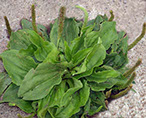
PLANTAIN
Plantain is renowned for its healing effect on the digestive system. This is especially useful for anyone who has been damaged by antibiotics, anti-inflammatory or pain medications, food allergies, or Celiac disease. Both leaves and seeds specifically target the digestive system for healing. The leaves may be steeped as tea, added to soups, or dried with a sauce similar to kale chips. The seeds – a type of psyllium – can be ground or soaked for bulk mucilage or absorbable fibre, which, consumed before meals, may help with weight loss. Because plantain is a gentle expectorant and high in silica, an infusion can be helpful for lung problems, coughs, and colds. Plantain is almost a panacea for the human body, treating everything from all menstrual difficulties, all digestive issues, to nearly all skin complaints, and even arthritis. Add to salads, chew to ease thirst, or enjoy in stir fries. This versatile wild vegetable will keep you in good health for years to come!
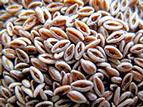
PSYLLIUM SEED
Psyllium has a long history of use throughout the world. It has been used in traditional medicine in the United States, Europe, India, and China. In the U.S., psyllium husk is most often used as a bulk-fiber laxative, in foods or in various fiber supplements. In fact, psyllium is a source of both soluble and insoluble fiber. In 1998, the U.S. Food and Drug Administration (FDA) authorized the use of a health claim in the labeling of foods and dietary supplements containing psyllium husk. The health claim states that diets low in saturated fat and cholesterol that include 7 grams of soluble fiber per day from psyllium, as found in Metamucil, may reduce the risk of heart disease by lowering cholesterol. Psyllium is a bulk-forming fiber. Bulk-forming fibers are laxatives because of their water-holding properties. They exert their action primarily through mechanical effects by bulking the colonic contents and decreasing transit time.

RED CLOVER
Historically, red clover has been used for cancer and respiratory problems, such as whooping cough, asthma, and bronchitis. Currently, red clover is used as a traditional or folk remedy for menopausal symptoms, breast pain associated with menstrual cycles, high cholesterol, osteoporosis, and symptoms of prostate enlargement. The flowering tops of the red clover plant are used to prepare extracts available in tablets and capsules, as well as in teas and liquid forms. Several small studies of red clover for menopausal symptoms had mixed results; however, most of these studies had design flaws. A large clinical trial and several reviews of the research literature concluded that red clover had no significant beneficial effects on menopausal symptoms. There is not enough scientific evidence to determine whether red clover is effective for any other health conditions.

RICE
Brown rice does hold promise, as evidenced by Shimabukuro's 2013 research in the British Journal of Nutrition. In this study, he reported weight loss and lower abdominal fat in subjects with metabolic syndrome who switched from white to brown rice. There's no need to wait for the research to play itself out before deciding to choose brown rice. It's a nutrient-dense food and is counted toward your whole grain intake by the U.S. Dietary Guidelines, which recommend you make half your grains whole grains to reduce the risk of chronic diseases.
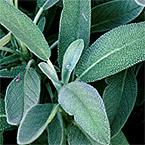
SAGE
Sage has not been well studied as a treatment for sore throat, so there is little scientific evidence to support its use for that ailment. Two small studies suggest that sage may improve mood and mental performance in healthy young people and memory and attention in older adults. Results of another small clinical study suggest that a sage extract was better than placebo at enhancing thinking and learning in older adults with mild to moderate Alzheimer’s disease. Laboratory studies suggest that essential oils from sage may have antimicrobial properties. Some species of sage contain thujone, which can affect the nervous system. Extended use or taking large amounts of sage leaf or oil may result in restlessness, vomiting, vertigo, rapid heart rate, tremors, seizures, and kidney damage. It also may lead to wheezing. Ingesting 12 drops or more of the essential oil is considered a toxic dose.
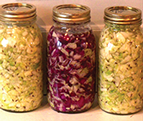
SAUERKRAUT
Historically sauerkraut was taken on long voyages to ensure that the crew didn’t get scurvy – a terrible disease caused by a vitamin C deficiency. It worked because sauerkraut is a good source of natural vitamin C. Sauerkraut is an excellent way to enjoy cabbage. But an interesting Finnish study found that beyond the normal benefits of cabbage, sauerkraut has even more cancer-fighting powers. It was found that through the fermentation process, isothiocyanates were produced that were found to prohibit the growth of cancer. Glucosinolates in sauerkraut were also found to help activate the body’s natural antioxidant enzymes, and the flavonoids in it are helpful for protecting artery walls from oxidative damage. Cabbage is an excellent source of vitamin U, which can help heal peptic ulcers.

SAW PALMETTO
Several small studies suggest that saw palmetto may be effective for treating BPH symptoms. However, a 2011 NCCAM-cofunded study in 369 older men demonstrated that saw palmetto extract administered at up to three times the standard daily dose (320 mg) did not reduce the urinary symptoms associated with BPH more than placebo. In addition, a 2009 review of the research concluded that saw palmetto has not been shown to be more effective than placebo for this use. In 2006, an NIH-funded study of 225 men with moderate-to-severe BPH found no improvement with 320 mg of saw palmetto daily for 1 year versus placebo. There is not enough scientific evidence to support the use of saw palmetto for reducing the size of an enlarged prostate or for any other conditions.
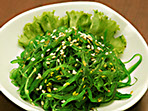
KELP AND OTHER SEA PLANTS
includes kelp, dulse, nori, hijiki, bladderwrack, chlorella, etc) -- Rich in life-giving nutrients drawn in from the ocean and sun, sea vegetables help remove heavy metals, detoxify the body, provide numerous trace minerals, regulate cholesterol, and decrease the risk of cancer. Seaweeds benefit the entire body, and are especially excellent for the thyroid (high iodine), immune system, adrenals, and hormone function
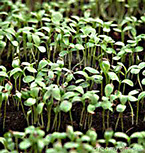
SEED GERM
Seeds like flax seeds (known as alsi seeds in India), fenugreek seeds, sesame seeds / gingelly seeds (til), garden cress seeds (halim seeds), and aniseeds (saunf) are rich in iron, calcium, fiber, and protein. These are the nutrients which is commonly deficient in Indian diet. Another advantage of eating nuts and seeds is that you just need to consume a small quantum to meet a good percentage of the recommended intakes. No wonder, they offer several benefits to the mankind. These underrated seeds are a valuable food source. Therefore healthy and edible seeds can give maximum health benefits. Sesame seeds (til), flax seeds, fenugreek seeds, and aniseeds are commonly consumed in India. In western countries there is a greater consumption of sunflower seeds, melon seeds, pumpkin seeds, and quinoa. Amaranth seeds, garden cress seeds are some lesser known and less consumed seeds which are laden with minerals and vitamins
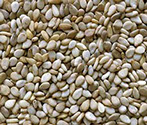
SESAME SEED & TAHINI
Not only are sesame seeds an excellent source of copper and a very good source of manganese, but they are also a good source of calcium, magnesium, iron, phosphorus, vitamin B1, zinc, molybdenum, selenium, and dietary fiber. In addition to these important nutrients, sesame seeds contain two unique substances: sesamin and sesamolin. Both of these substances belong to a group of special beneficial fibers called lignans, and have been shown to have a cholesterol-lowering effect in humans, and to prevent high blood pressure and increase vitamin E supplies in animals. Sesamin has also been found to protect the liver from oxidative damage. Sesame seeds are an excellent source of copper, known for its use in reducing some of the pain and swelling of rheumatoid arthritis. Copper's effectiveness is due to the fact that this trace mineral is important in a number of antiinflammatory and antioxidant enzyme systems.
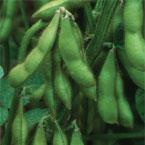
SOY
Research suggests that daily intake of soy protein may slightly lower levels of LDL (“bad”) cholesterol.
Some studies suggest that soy isoflavone supplements may reduce hot flashes in women after menopause. However, the results have been inconsistent. There is not enough scientific evidence to determine whether soy supplements are effective for any other health uses. NCCAM supports studies on soy, including its effects in cardiovascular disease and breast cancer, and on menopause-related symptoms and bone loss. Soy is considered safe for most people when used as a food or when taken for short periods as a dietary supplement.
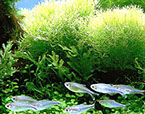
SPIRULINA
Spirulina and Blue-Green Algae -- The world's highest source of complete protein (65%), spirulina provides a vast array of minerals, trace elements, phytonutrients and enzymes. Blue-green algae is a wild-grown superfood with a 60% protein percentage, but is equally or exceedingly higher in other components. Both are vital superfoods.
ST. JOHN'S WORT
Although some studies of St. John’s wort have reported benefits for depression, others have not. For example, a large study sponsored by NCCAM found that the herb was no more effective than placebo in treating major depression of moderate severity, and a study co-funded by NCCAM and the National Institute of Mental Health found that neither St. John’s wort nor a standard antidepressant medication relieved symptoms of minor depression better than a placebo. Research has shown that St. John’s wort interacts with many medications in ways that can interfere with their intended effects. Examples of medications that can be affected include: antidepressants; birth control pills; Cyclosporine, which prevents the body from rejecting transplanted organs; Digoxin, a heart medication Indinavir; and possibly other drugs used to control HIV infection; Irinotecan and possibly other drugs used to treat cancer; seizure-control drugs, such as phenytoin and phenobarbital; Warfarin and related anticoagulants.
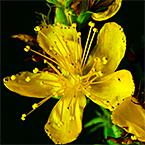
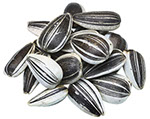
SUNFLOWER SEED
Looking for a health-promoting snack? Enjoy a handful of mild nutty tasting sunflower seeds with their firm but tender texture to take care of your hunger and get a wealth of nutrition at the same time. Sunflower seeds are available at your local market throughout the year. Sunflower seeds are the gift of the beautiful sunflower that has rays of petals emanating from its bright yellow, seed-studded center. The flower produces grayish-green or black seeds encased in tear-dropped shaped gray or black shells that oftentimes feature black and white stripes. Since these seeds have a very high oil content, they are one of the main sources of polyunsaturated oil.

SWEET POTATO
Orange-fleshed sweet potatoes may be one of nature's unsurpassed sources of beta-carotene. Several recent studies have shown the superior ability of sweet potatoes to raise our blood levels of vitamin A. This benefit may be particularly true for children. In several studies from Africa, sweet potatoes were found to contain between 100-1,600 micrograms (RAE) of vitamin A in every 3.5 ounces—enough, on average, to meet 35% of all vitamin A needs, and in many cases enough to meet over 90% of vitamin A needs (from this single food alone).
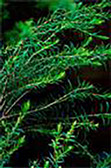
TEA TREE OIL
A 2004 NCCAM-funded review examined the ability of tea tree oil to kill bacteria and found that in vitro (in a test tube) studies may provide some preliminary evidence for the use of tea tree oil as an adjunctive (additional) treatment for wounds involving difficult-to-treat bacterial infections such as methicillin-resistant Staphylococcus aureus (MRSA). However, large, well-designed clinical trials on tea tree oil are lacking, and it remains unclear whether tea tree oil is effective against these emerging resistant strains of bacteria in people.
Some smaller-scale clinical studies have had positive results for treating athlete's foot, nail fungus, dandruff, and acne, but more large-scale, well-designed clinical studies are needed.
Tea tree oil may be effective for acne. One clinical trial compared a 5 percent tea tree oil gel to a 5 percent benzoyl peroxide product for the treatment of acne and found that the benzoyl peroxide worked slightly better but that the tea tree oil had fewer side effects.
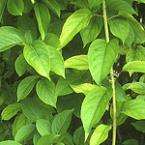
THUNDER GOD VINE
Laboratory findings suggest that thunder god vine may fight inflammation, suppress the immune system, and have anti-cancer effects. Although early evidence is promising, there have been few high-quality studies of thunder god vine in people. Results from a large study funded by the National Institute of Arthritis and Musculoskeletal and Skin Diseases (NIAMS), which compared an extract of thunder god vine root with a conventional medicine (sulfasalazine) for rheumatoid arthritis, found that participants’ symptoms (e.g., joint pain and swelling, inflammation) improved more significantly with thunder god vine than with sulfasalazine. A small study on thunder god vine applied to the skin found benefits for rheumatoid arthritis symptoms.
There is not enough scientific evidence to assess thunder god vine’s use for any other health conditions. Thunder god vine can cause severe side effects and can be poisonous if it is not carefully extracted from the skinned root. Other parts of the plant—including the leaves, flowers, and skin of the root—are highly poisonous and can cause death.
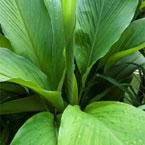
TURMERIC
There is little reliable evidence to support the use of turmeric for any health condition because few clinical trials have been conducted. Preliminary findings from animal and other laboratory studies suggest that a chemical found in turmeric—called curcumin—may have anti-inflammatory, anticancer, and antioxidant properties, but these findings have not been confirmed in people. NCCAM-funded investigators have studied the active chemicals in turmeric and their effects—particularly anti-inflammatory effects—in human cells to better understand how turmeric might be used for health purposes. NCCAM is also funding basic research studies on the potential role of turmeric in preventing acute respiratory distress syndrome, liver cancer, and post-menopausal osteoporosis. Turmeric is considered safe for most adults.
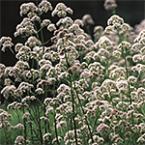
VALERIAN
Research suggests that valerian may be helpful for insomnia, but there is not enough evidence from well-designed studies to confirm this. There is not enough scientific evidence to determine whether valerian works for other conditions, such as anxiety or depression. NCCAM-funded research on valerian includes studies on the herb’s effects on sleep in healthy older adults and in people with Parkinson’s disease. NCCAM-funded researchers are also studying the potential of valerian and other herbal products to relieve menopausal symptoms. Studies suggest that valerian is generally safe to use for short periods of time (for example, 4 to 6 weeks). No information is available about the long-term safety of valerian.
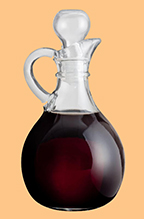
VINEGAR
In recent years, apple cider vinegar has been singled out as an especially helpful health tonic. So it's now sold in both the condiment and the health supplement aisles of your grocery store. While many of the folk medicine uses of vinegar are unproven (or were disproved), a few do have medical research backing them up. Some small studies have hinted that apple cider vinegar could help with several conditions, including diabetes and obesity. Look on the back of a box of supplements -- or on the Internet or in the pages of any one of the many books on vinegar and health -- and you'll find some amazing claims. Apple cider vinegar is purported to treat numerous diseases, health conditions, and annoyances. To name a few, it's supposed to kill head lice, reverse aging, ease digestion, and wash toxins from the body.
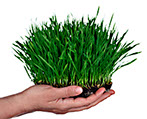
WHEAT GRASS
Wheat grass juice is nature’s finest medicine. It is a powerful concentrated liquid nutrient. Two ounces of wheat grass juice has the nutritional equivalent of five pounds of the best raw organic vegetables. For example, wheat grass as twice the amount of Vitatin A as carrots and is higher in Vitamin C than oranges! It contains the full spectrum of B vitamins, as well as calcium, phosphorus, magnesium, sodium and potassium in a balanced ratio. Wheat grass is a complete source of protein, supplying all of the essential amino acids, and more. It has about 20% of total calories coming from protein. This protein is in the form of poly peptides, simpler and shorter chains of amino acids that the body uses more efficiently in the blood stream and tissues. In addition to flooding the body with therapeutic dosages of vitamins, minerals, antioxidants, enzymes, and phytonutrients, wheat grass is also a powerful detoxifier, especially of the liver and blood. It helps neutralize toxins and environmental pollutants in the body.

WHEY
Whey is the byproduct of cheese-making, the liquid portion that contains all the water-soluble benefits of the milk with less of the allergy potential of milk proteins, such as casein. When it comes to providing for diets needing increased concentrations of protein, whey is an ideal ingredient. Protein provides the building blocks for muscle, and certain segments of the population need concentrated protein for building and maintaining lean muscle mass. Examples include those active in sports or persons in recovery. Also, pregnant women, children and teens have a greater need for protein for tissue growth. While there are many dietary sources of lean protein, such as chicken, fish, lean beef and eggs, lifestyles, dietary habits, dietary restrictions and personal preferences can affect the selection of protein. And athletes breaking down significant amounts of protein can benefit from a concentrated amount
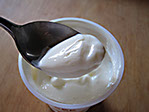
YOGURT
One of the words we're hearing more and more of regarding yogurt is "probiotics." Probiotics are "friendly bacteria" that are naturally present in the digestive system. Live strains of these "good bacteria" are also found in many yogurt products. While more research needs to be done, there's some evidence that some strains of probiotics can help boost the immune system and promote a healthy digestive tract. Probiotics made news recently when a class action lawsuit was filed against the Dannon Co. over marketing for its Activia and DanActive products, in which the company uses trademarked probiotic strains. Activia is a yogurt marketed as being "clinically proven to help regulate the digestive system when eaten daily for two weeks," while DanActive is a drink marketed as being "clinically proven to help strengthen the body's defense systems," according to company web site
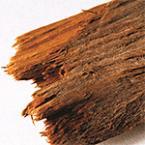
YOHIMBE
It is not known whether yohimbe is effective for any health condition because clinical trials have not been conducted on the bark or its extract. Yohimbe has been associated with high blood pressure, increased heart rate, headache, anxiety, dizziness, nausea, vomiting, tremors, and sleeplessness. Yohimbe can be dangerous if taken in large doses or for long periods of time.
People should not combine yohimbe with monoamine oxidase (MAO) inhibitors as effects may be additive. Yohimbe should be used with caution when taken with medicines for high blood pressure, tricyclic antidepressants, or phenothiazines (a group of medicines used mostly for mental health conditions such as schizophrenia). People with kidney problems and people with psychiatric conditions should not use yohimbe. Women who are pregnant or breastfeeding should not take yohimbe.
SOURCE: NATIONAL INSTITUTES OF HEALTH - NCCAM
This site and all of its contents are copyright © 2015 New America Inc. All rights are reserved.